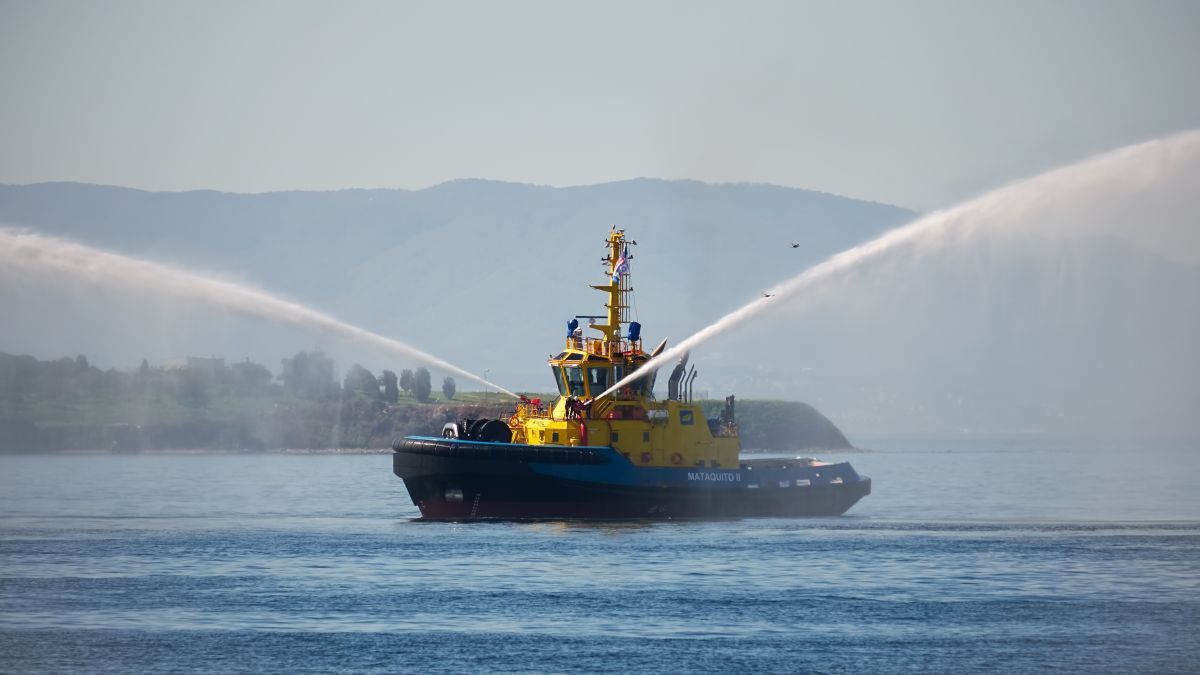Operators in Latin America have invested in ASD tugs with higher bollard pull
Harbour tugs in South America have evolved considerably over the last few years through newbuild orders and select purchases.
“No longer does the continent rely on low bollard pull, obsolete and conventional twin-screw tugs from Europe and Asia,” says Century Marine Services managing director Steve Dougal.
“The region now has some of the most modern and advanced tugs afloat.” Recent arrivals include Coloso and Mataquito II, both with 80 tonnes of bollard pull into Chile, Brujo (75 tonnes) into Peru and Sangay (65 tonnes) into Ecuador.
In Brazil, there are at least 12 tugs with bollard pulls of 70-80 tonnes on order from local shipyards for delivery in 2022, with more following next year.
“The exception is Argentina where economic and political considerations, and aggressive competition prevent any realistic investment in new tonnage,” says Mr Dougal.
In Ecuador, the change from small twin-screw to high-powered azimuth stern drive (ASD) tugs has been rapid “due to the ability of larger vessels now being able to call at Guayaquil and the new port of Posorja. Unfortunately, rates have not changed,” he says.
“The demand for high bollard pull is due to increased vessel sizes and South America is following the global curve in the need for this investment,” Mr Dougal continues.
“Other regions have already moved on from smaller twin-screw tonnage, so it is no surprise the South American continent had to follow.”
He says there is still potential for more newbuilds and tug purchases “as there remains a lot of catching up to do”.
However, owners are facing growing financial issues. “New tugs are expensive and newbuild costs are expected to rise by at least 10% over the next year, making investment decisions more difficult,” says Mr Dougal.
“Tug owners must also contend with inflation and substantially higher finance, operating and crew costs.”
These increases have coincided with market consolidation of the tug owners’ client bases, larger ships calling at the region’s ports and client demand for multi-port towage contracts. “Fewer carriers and less port calls add to the already aggressive pressure on rates,” says Mr Dougal.
“But new higher-powered ASD tugs also mean the older twin-screw tugs are ultimately made redundant. The usual markets for such vessels have shrunk to almost nothing so the question remains, what is to be done with these older uneconomical tugs?”
There are scrapyards in Europe, North America and most of Asia able to dismantle older tugs. But many South American ports are geographically too far away from a scrapyard for that to be economically viable causing an additional burden. “It is a question that remains unresolved,” says Mr Dougal.
Tug owners in South America face the same issues as owners elsewhere, but the continent’s remote geography and social issues give rise to unique problems.
Fleet replacement in South America will continue, but tug owners’ return on investment must justify it.
“The shipping companies who rely on tugs to bring their assets safely into port must realise there is a cost attached and should stop forcing tug owners to accept loss-making rates,” says Mr Dougal.
“But ultimately, it is for the tug owners themselves to demand realistic rates for their services and move away from the lowest common denominator.”






